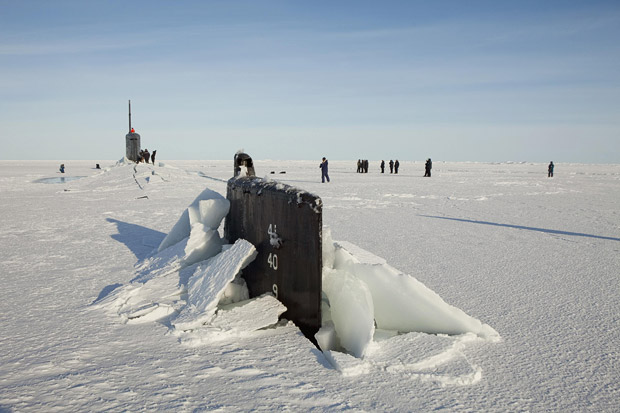
All three volcanoes are located in the remote southwestern region of Alaska. Great Sitkin Volcano and Semisopochnoi are located in the Aleutian Islands. The Pavlof Volcano is located in the Aleutian mountain range right next to the islands but connected to mainland North America.
This is the latest volcanic activity recorded in the United States. According to Chris Waythomas, a geologist with the Alaska Volcano Observatory (AVO), no Alaskan communities have been affected by the volcanic eruptions. (Related: Yellowstone Supervolcano hit by 43 earthquakes in April, sparking fears of impending eruption.)
Pavlof Volcano erupted without warning
Pavlof Volcano is an 8,261-foot tall stratovolcano covered in ice and snow. It is located nearly 600 miles to the southwest of Anchorage, the state's largest city. On Thursday, the AVO's webcams located near the volcano recorded it emitting episodic and low-level ash. The AVO has webcams situated near dozens of volcanoes in Alaska to record volcanic activity.
Pavlof's sudden activity prompted the observatory to raise its volcano alert level for it from yellow to orange and "to watch." This indicates that the volcano is currently erupting with little to no volcanic ash emissions, but this eruption may pose limited hazards to nearby Alaskan communities.
Waythomas said the ash clouds were seen rising above the volcano's summit. These clouds drifted about six miles to the south before dissipating over the Pacific Ocean. The ash clouds did not affect any nearby populated areas. The nearest communities to Pavlof are King Cove and Cold Bay, which are both around 30 miles to the southwest. They have a combined population of around 1,000 people.
Pavlof is considered one of Alaska's most active volcanoes in the Aleutian volcanic range of active and dormant volcanos. Waythomas has called it "very sneaky" because "it can get going without much warning." He described Pavlof as an "open system volcano." This means the magma can move freely inside it. Sometimes this magma can move to the surface "really fast and it can start erupting almost with no warning."
Pavlof Volcano last erupted in 2016. It dropped minimal levels of ash on Nelson Lagoon, a small community of about 50 people located 45 miles to the northeast.
Great Sitkin and Semisopochnoi in the Aleutian Islands have also erupted
Also on Thursday, the AVO received reports that the Great Sitkin Volcano on the island of the same name was erupting and spewing lava. The island lies right in the middle of the Aleutian Islands chain.
Great Sitkin, like Pavlof, is a stratovolcano. It has a caldera and a dome and is about 1,150 miles to the southwest of Anchorage. The reports came from Adak, a community of about 300 people living on an island 27 miles to the west of Great Sitkin. The reports from the community were later verified by AVO by webcam. The pictures indicate the lava accumulating on the summit crater, causing the lava dome to grow.
Waythomas noted that it is unusual for Great Sitkin to erupt with lava, but its level of activity has been "fairly passive" and not necessarily a threat to Adak. The volcano is currently on orange and "to watch" alert levels.
"The fact that they just happen to walk outside and see it was really great," said Waythomas.
Semisopochnoi, located about 180 miles to the west of Great Sitkin and right near the western end of the U.S.-owned Aleutian Islands, has also been erupting intermittently for the past week. On Wednesday, the AVO reported that Semisopochnoi produced an ash cloud that rose around 10,000 feet into the air and moved at a speed of 20 knots (23 miles per hour) to the east.
There are no populated areas close to Semisopochnoi. The AVO currently has it on orange and "to watch" alert levels.
Learn more about the latest volcanic eruptions and other weather disturbances by reading the latest articles at Climate.news.
Sources include:
Please contact us for more information.























